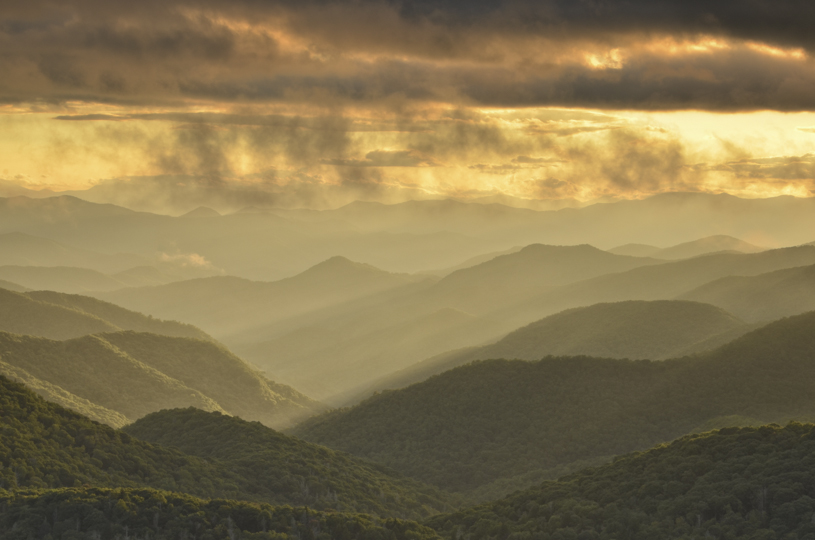Hello and welcome to the last Saturday in 2018! Another year gone by. Are you ready for 2019?
Last week’s puzzler was a silhouette of a wood stork in flight. Did you recognize it?
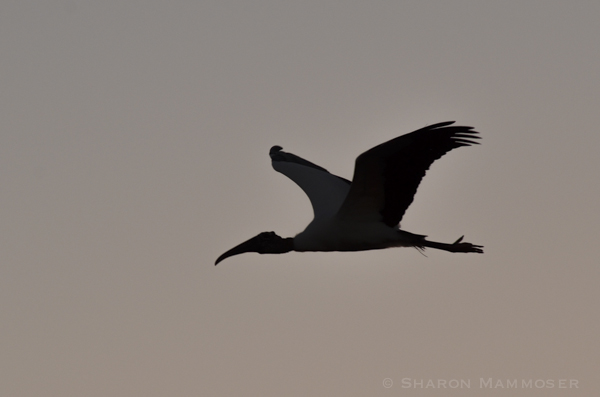
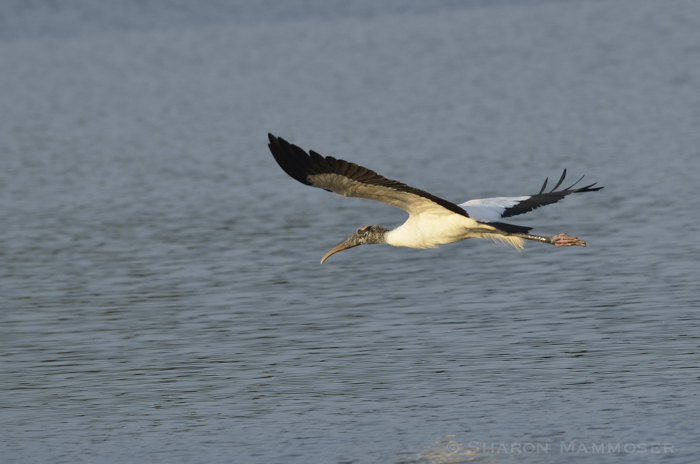
Wood storks, also called wood ibis, ironhead, preacherbird, and flinthead, are the only native stork in North America. They are found in Florida and parts of Georgia and South Carolina, at freshwater and brackish wetlands. Wood storks have a distinctive bald head, long legs, white body, white, black-tipped wings, and a long, thick bill. They stand 33-45 inches tall, weigh 4.5-5.8 pounds and have a wingspan of up to 5.8 feet, making them pretty impressive birds. Their head may be their most distinctive feature, resembling that of a vulture, bald of feathers. Also, like a vulture, they will defecate on their feet to cool themselves on hot summer days.
If you’ve ever had a chance to watch a wood stork hunting in shallow water, you would notice that they have an interesting way of catching prey, which is anything from fish, to small amphibians, crayfish, large insects and other invertebrates. Wood storks will stand in shallow water, putting their long, decurved bill in the water, slightly open and move it around until they touch something, at which point they can snap it shut to snag the unsuspecting animal. Wood storks are lightening fast with this technique–able to close their beaks in just 25 milliseconds. They will also move their feet up and down in the muddy water, or open their wings to try and startle prey.
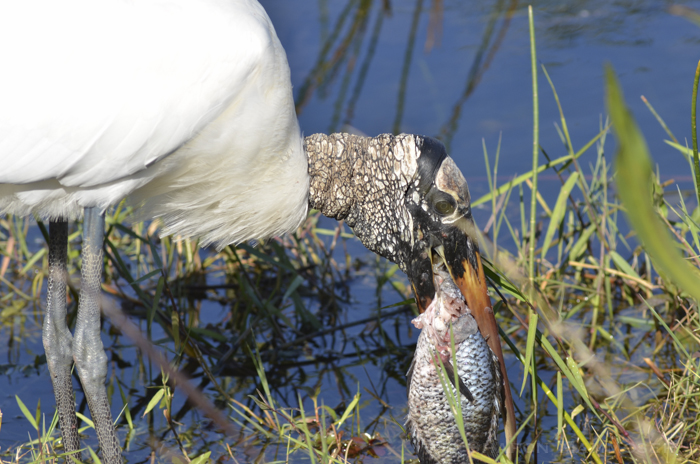
Sometimes, the prey might be bigger than they are ready for, as is evidenced by this photo I took years ago in Florida of a wood stork with a GIANT fish. The poor fish was helpless while the stork walked around, followed closely by a flock of black vultures who were interested in a free meal.
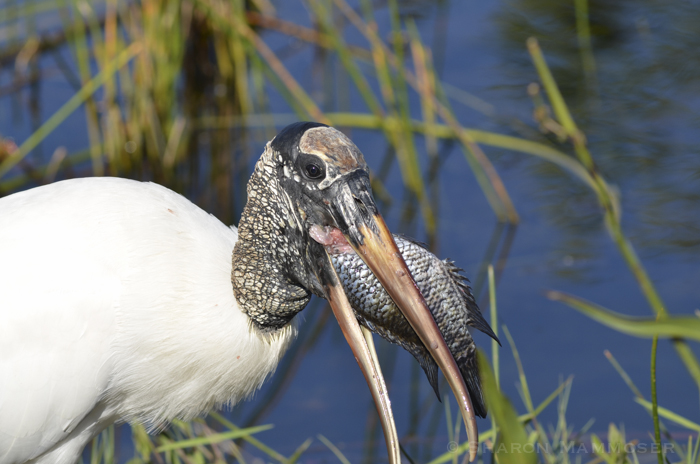
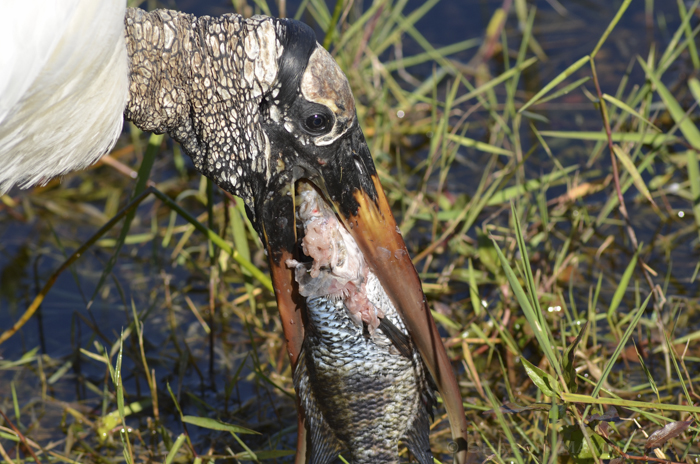
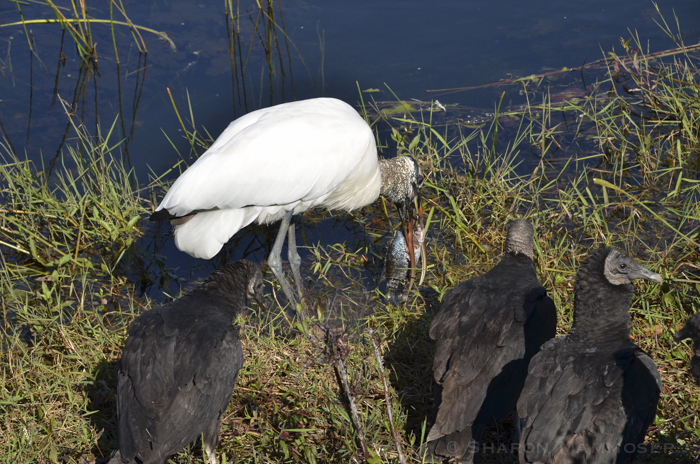
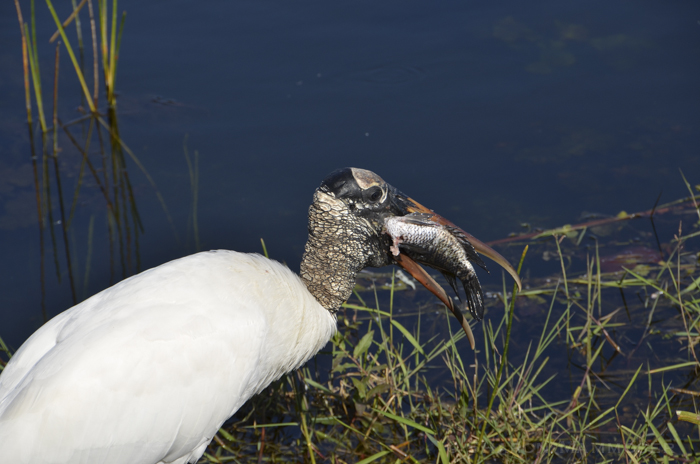
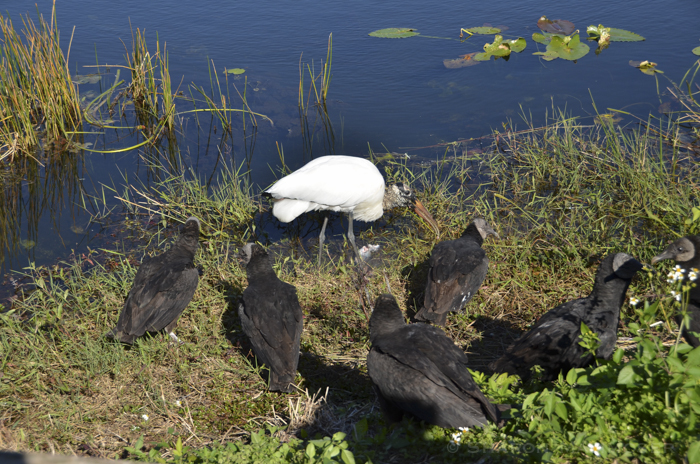
Wood stork might not look all that graceful, but in the air, they are pure grace, sometimes reaching heights of 6000 feet!
According to Cornell Lab of Ornithology, a site I completely trust for its accuracy, wood storks do not mate for life despite the prevalent myth stating otherwise. Pairs do stay together through the nesting season, each bird taking turns to incubate the 2-5 eggs. Nesting for wood storks is a community affair, with multiple nests in the same area, or even the same tree, in what’s called a rookery. Young storks will remain in the nest for two months before fledging.
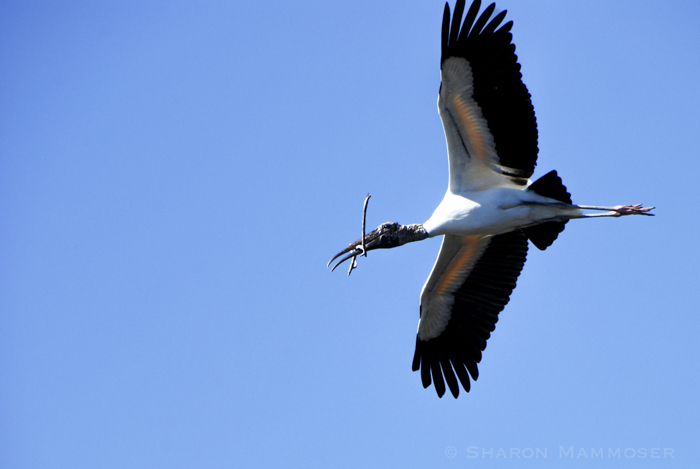
Here, a pair is standing in shallow water, making a perfect reflection.
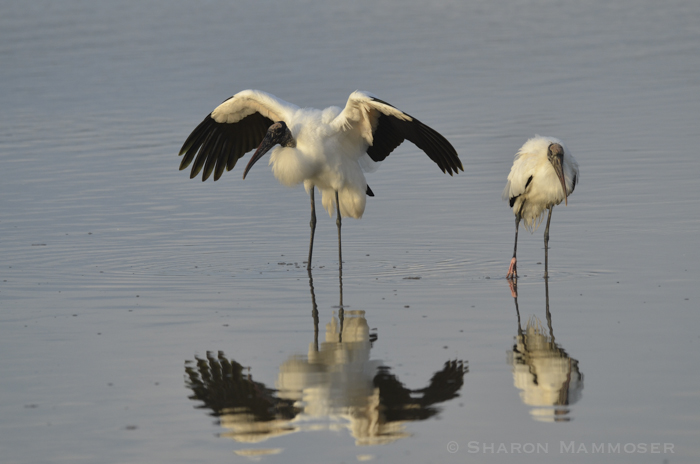
Ready for another puzzler? Check out another silhouette…do you recognize it?

